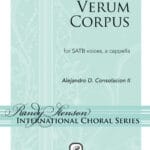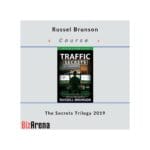Hey there, Tolkien enthusiasts! Do you dream of speaking the elegant language of the Elves? This comprehensive guide explores the world of online Quenya translators, providing you with the resources and knowledge to embark on your Elvish linguistic journey. From quick translations to in-depth study, we’ll uncover the secrets of Quenya and help you navigate its complexities.
Unlocking the Magic of Quenya
Quenya, the language of the High Elves in Tolkien’s Middle-earth, holds a special allure. [https://www.lolaapp.com/] Whether you’re a seasoned Tolkien aficionado or just starting, this guide offers a path to understanding and even speaking this enchanting language. We’ll explore the tools and techniques that can bring you closer to fluency.
Quenya Translation: A Beginner’s Journey
Translating Quenya isn’t a simple word-for-word process. Its intricate grammar, unique sentence structures, and even dialectal variations require a deeper understanding. This section provides the foundational knowledge you need to begin translating Quenya effectively.
Online Tools for Quenya Translation
Several online resources can assist in your Quenya translation endeavors. Sites like funtranslations.com and mr-dialect.com offer quick translations, providing a general sense of words or phrases. However, these automated tools may not always capture the nuances of Quenya grammar. They are best used as a starting point for further exploration.
Advanced Resources for Quenya Scholars
For those seeking a deeper understanding, dedicated Quenya resources are indispensable. Dictionaries, comprehensive grammar guides, and interactive learning platforms offer a wealth of information, from vocabulary and pronunciation to complex grammatical rules. These resources empower you to tackle more challenging translations and unlock the intricacies of Quenya.
Mastering the Art of Quenya
Beyond the basics, consider learning the Tengwar script, the elegant writing system Tolkien devised for Quenya. This adds another layer of immersion, connecting you more deeply with the language. Engaging with the vibrant online Quenya community through forums and discussion groups can also provide invaluable support and insights.
Ethical Considerations in Quenya Translation
Translating Quenya carries a responsibility to respect the language’s history and the contributions of Tolkien and scholars. Be mindful of ongoing discussions regarding its ownership and evolution within the fan community. Maintaining this respect ensures the language continues to thrive.
The Ever-Evolving Nature of Quenya
Like all languages, Quenya is not static. Different interpretations and variations have emerged within the fan community, contributing to its richness and complexity. Recognizing these nuances provides a deeper appreciation for the dynamic nature of language itself.
Quenya in Context: Comparing Constructed Languages
Comparing Quenya to other constructed languages like Klingon or Dothraki offers a fascinating perspective on language creation. This comparison highlights the artistry and thoughtfulness behind constructing a language from scratch, revealing the unique characteristics of each.
Embark on Your Quenya Adventure
Whether for fan fiction, scholarly research, or personal enrichment, Quenya translation is a rewarding pursuit. This guide equips you with the tools to begin your journey. Embrace the challenge and unlock the secrets of this captivating Elvish language.
Quenya vs. Elvish: Unraveling Tolkien’s Languages of Middle-earth
We often hear “Elvish” and immediately think of Quenya. But are they truly interchangeable? Not quite. “Elvish” is a broader term encompassing a family of languages, much like “Romance languages” includes Spanish, French, and Italian. Quenya is but one member of this Elvish family, holding a prestigious position similar to Latin among the Romance languages.
J.R.R. Tolkien, a passionate philologist, created Quenya as the language of the High Elves. It represents the elegant, formal tongue used for ceremonies, songs, and poetry. While Quenya occupies a significant place in The Lord of the Rings, Sindarin serves as the common tongue for most Elves, analogous to modern Romance languages.
The prominence of Quenya in songs and poems within The Lord of the Rings has cemented its place in popular culture, often leading to its association with the general term “Elvish.” However, Tolkien’s linguistic world is far more extensive. He crafted a complex family of languages, each with its own history and characteristics. Some, like Quenya and Sindarin, are well-developed, while others exist only in fragments, adding to the mystique of Tolkien’s world.
Ongoing research into Tolkien’s unpublished works suggests our understanding of these languages may continue to evolve. This dynamic nature of Tolkien linguistics makes its study all the more captivating.
Beyond “Aia”: Mastering Quenya Greetings and Phrases
You’re eager to speak Quenya, and learning greetings is a perfect starting point. While “Aia” is the common equivalent of “hello,” Quenya offers a variety of greetings for different situations.
“Alasse” conveys a more formal “be well,” suitable for showing respect. “Ala” provides a more casual “hi” or “hey.” For truly special occasions, the majestic “Aiya Eärendil Elenion Anarim!” (“Hail Eärendil, brightest of stars!”) adds a touch of ceremonial grandeur.
While online translators like LingoJam or Glosbe can be helpful for quick lookups, they may not always capture the nuances of Quenya. Exploring dedicated resources like Omniglot or engaging with online Quenya communities provides a deeper and more accurate understanding. YouTube channels like Artreii’s offer valuable pronunciation guides and language lessons.
Remember, Quenya is more than just words; it’s a window into Tolkien’s imagination. By learning Quenya, you delve into the creative process of a literary genius, connecting with the rich history and cultural context of Middle-earth.
Be cautious when using online Quenya translators. Machine translation is constantly improving, but it still struggles with the complexities of a constructed language. Use these tools as a helpful guide, but always cross-reference with other resources and the Quenya community for accurate usage.
Learning Quenya is an ongoing journey of discovery. Embrace the challenge, explore the available resources, and connect with fellow enthusiasts.
| Quenya Greeting | Meaning | Level of Formality |
|---|---|---|
| Aia | Hello | General |
| Alasse | Be well | Formal |
| Ala | Hi/Hey | Informal |
| Aiya Eärendil Elenion Anarim! | Hail Eärendil, brightest of stars! | Ceremonial/Grand |
Quenya vs. Welsh: Unraveling Tolkien’s Elvish Linguistic Influences
A common question arises: Is Quenya based on Welsh? The short answer is no, but the relationship is nuanced. While Welsh played a role in Tolkien’s linguistic tapestry, it wasn’t the primary influence on Quenya. Finnish served as the main ingredient, while Welsh added a touch of flavor.
While some may hear echoes of Welsh in Quenya’s musicality, this likely stems from Tolkien’s appreciation for Welsh phonology. However, Quenya’s grammar and vocabulary are firmly rooted in Finnish, with additional influences from Latin, Greek, and Gothic. Sindarin, another Elvish language, bears a stronger resemblance to Welsh, both in sound and grammar.
Tolkien’s linguistic creations were complex, drawing inspiration from multiple sources. He was a philologist, fascinated by language evolution and interconnectedness. The study of Tolkien’s languages is an ongoing process, with new theories and interpretations emerging as scholars delve into his work.
If you’re planning a potluck, use our free potluck sign up sheet template to organize your event. Explore the revolutionary ideas of Marcel Duchamp in our analysis of The Creative Act.
- Georgia Platform: A Southern Strategy, 1850s - March 31, 2025
- How many weeks is 40 days: Quick Conversion Guide for Accurate Results - March 31, 2025
- How many feet is 300 meters? 984 Feet: Understand Length Conversions Easily - March 31, 2025
















2 thoughts on “The Best Quenya Translators Online: A Comparative Guide for Tolkien Fans”
Comments are closed.